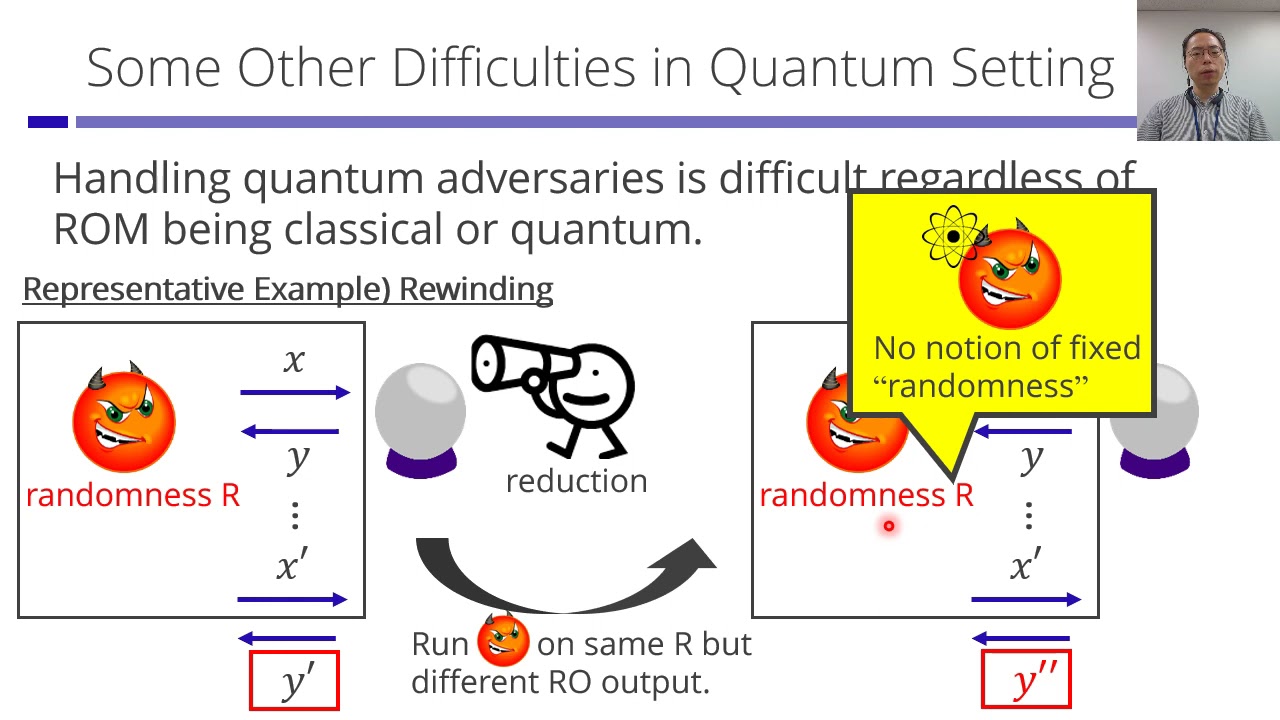Welcome to the resource topic for 2021/927
Title:
A New Simple Technique to Bootstrap Various Lattice Zero-Knowledge Proofs to QROM Secure NIZKs
Authors: Shuichi Katsumata
Abstract:Many of the recent advanced lattice-based \Sigma-/public-coin honest verifier (HVZK) interactive protocols based on the techniques developed by Lyubashevsky (Asiacrypt’09, Eurocrypt’12) can be transformed into a non-interactive zero-knowledge (NIZK) proof in the random oracle model (ROM) using the Fiat-Shamir transform. Unfortunately, although they are known to be secure in the \mathit{classical} ROM, existing proof techniques are incapable of proving them secure in the \mathit{quantum} ROM (QROM). Alternatively, while we could instead rely on the Unruh transform (Eurocrypt’15), the resulting QROM secure NIZK will incur a large overhead compared to the underlying interactive protocol. In this paper, we present a new simple semi-generic transform that compiles many existing lattice-based \Sigma-/public-coin HVZK interactive protocols into QROM secure NIZKs. Our transform builds on a new primitive called \textit{extractable linear homomorphic commitment} protocol. The resulting NIZK has several appealing features: it is not only a proof of knowledge but also straight-line extractable; the proof overhead is smaller compared to the Unruh transform; it enjoys a relatively small reduction loss; and it requires minimal background on quantum computation. To illustrate the generality of our technique, we show how to transform the recent Bootle et al.'s 5-round protocol with an exact sound proof (Crypto’19) into a QROM secure NIZK by increasing the proof size by a factor of 2.6. This compares favorably to the Unruh transform that requires a factor of more than 50.
ePrint: https://eprint.iacr.org/2021/927
Talk: https://www.youtube.com/watch?v=ovJ7zGxTRsg
See all topics related to this paper.
Feel free to post resources that are related to this paper below.
Example resources include: implementations, explanation materials, talks, slides, links to previous discussions on other websites.
For more information, see the rules for Resource Topics .
